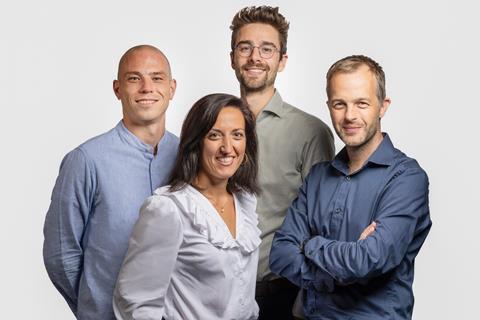Obulytix, a spin-off from UGent and KU Leuven, sees proteins from bactericidal viruses as the solution to the growing problem of antibiotic resistance. ‘With this, we can make an optimal antibiotic against any possible bacterial infectious disease.’
‘The antibiotic resistance crisis is getting worse and worse’, sighs Yves Briers, CEO and co-founder of Ghent based Obulytix. ‘There used to be multi-drug resistance, where bacteria were resistant to a few classes of antibiotics. This number has increased. And now there are the first pan-drug resistant strains. This means that no antibiotic works against these bacteria.’
No wonder antibiotic researchers are working overtime to find a completely new class of antibiotics. One against which bacteria have no defence. According to Obulytix, a start-up founded only last summer, the solution lies in bacteria’s natural enemies: bacteriophages, or viruses that kill bacteria. Because, says Briers: ’The enemy of our enemy is our friend.’
Popped balloon
It all revolves around a set of enzymes, lysines, that bacteriophages produce to attack bacteria. These phages work in a very different way to conventional antibiotics, explains Briers. ‘Classical antibiotics are small molecules that interfere with the metabolism of the bacterial cell, causing it to die. Our molecules are enzymes that cut the bacterium’s cell wall like molecular scissors, causing it to burst like a popped balloon.’
It is a very fast and efficient mechanism. ‘The phage lysines cut up to 1,000 times per second, and they only need to make a few hits before the cell collapses’, says Briers. This completely new class of antibiotics has other advantages too. For example, phage lysine-based drugs are also compatible with the microbiome, the collection of beneficial bacteria in our bodies that, among other things, support the immune system. ‘Phage lysines target the pathogen and leave the microbiome untouched’, says Briers.
‘Phage lysines leave the microbiome untouched’.
Yves Briers
Perhaps more importantly, there is no resistance to the bacteriophages’ enzymes. ‘We tested this using the classic resistance method, which works with sub-lethal doses. With all current and newly developed antibiotics, including those still in the clinical phase, resistance is easily seen with this test. This is almost impossible with our class because the phage lysines act particularly quickly on the cell wall. The cell wall is a critical part of the bacterium and almost never changes due to mutations.’
A final advantage of phage enzymes is that they consist of building blocks, each with a different function. For example, one block recognises and holds the cell wall of a particular bacterium, another does the cutting work and yet another boosts the efficiency of the attack. ‘Like Lego, we can do a lot of variation with these building blocks’, says Briers. ‘We can build millions of different types of phage lysines. So it’s not really one new antibiotic we’re making, but many. And we can tailor each one to a very specific application.’
Library
The idea of ‘playing’ with building blocks to build new enzymes did not come out of the blue. Briers and his team at Ghent University, in collaboration with KU Leuven, have been researching it for at least 20 years. Obulytix co-founders Dennis Grimon, Bjorn Criel and Maria Fonseca have also been part of this team for the last decade. ‘In the beginning, Briers and his colleagues had to make the phage lysines one by one’, Grimon explains. That was obviously very time-consuming. Then he took the first steps towards a high-throughput hit-to-lead platform that made the process much more efficient. We developed the platform together.’
According to Grimon, the uniqueness of the method lies in the use of a so-called tile library. ‘This is a collection of DNA fragments encoding different phage lysine building blocks. With the help of artificial intelligence, the design of this library was further improved. Then the industry discovered the potential of our method and products. This allowed us to make our business plan.’
‘The high throughput hit-to-lead platform made the process much more efficient’
Dennis Grimon
The €4 million investment Obulytix received last December from the Boehringer Ingelheim Venture Fund, Qbic and the Gemma Frisius Fund is expected to translate into actual application development this year. ‘We can make an optimal antibiotic against any infectious disease with our phage lysines’, says Briers. ‘But we will first focus on where the need is greatest. These are lung and blood infections caused by resistant Gram-negative bacteria, which often affect already weakened patients in hospital. We are in the process of developing the necessary lead molecules against them.’
The ultimate goal is to actually help solve the resistance problem. ‘There is a great need to transfer our development to industry’, says Briers. ‘We believe that these enzymes are the antibacterial drugs of the future. That would be a dream come true.’














Nog geen opmerkingen